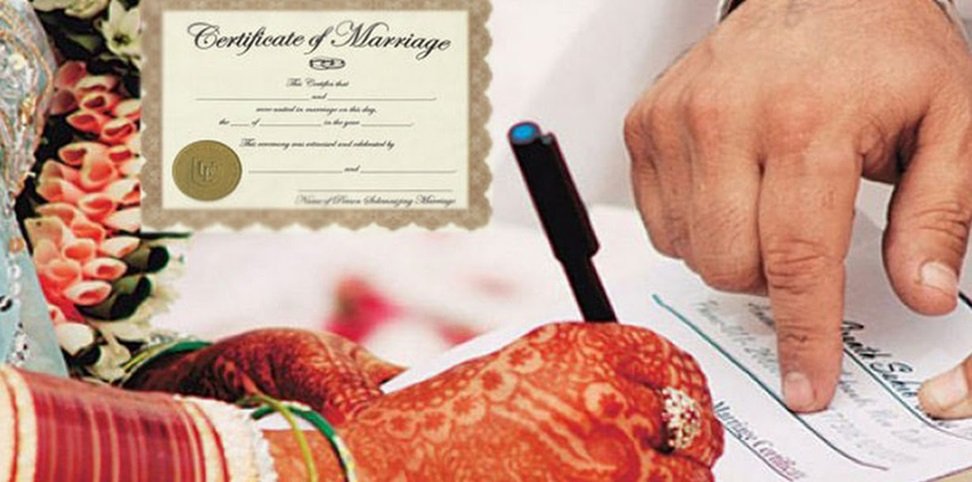Court Marriage Age: Court marriages are gaining popularity across the globe as a straightforward and legally recognized way to solemnize a union between two individuals. One critical aspect that often raises questions is the “court marriage age” and its implications for legality, culture, and social norms. This article delves into the legal age for court marriage, its variations across countries, societal perspectives, and everything else you need to know.
What is Court Marriage?
Court marriage is a legally recognized procedure where two individuals solemnize their marriage in the presence of a marriage registrar. Unlike traditional weddings, which may include religious or cultural ceremonies, court marriages focus on the legal aspect and are often simple and efficient.
Key Features of Court Marriage
- Legally Binding: Court marriages are recognized by law.
- Open to All: Available to people of different religions, castes, or nationalities.
- Simple Procedure: Requires fewer rituals compared to traditional ceremonies.
- Marriage Certificate: Couples receive a marriage certificate as proof of their union.
Court Marriage Age: The Legal Requirement
The age for court marriage is a fundamental aspect governed by law. Different countries and regions may have their own minimum age requirements. Here’s a breakdown of the legal age for court marriage in various parts of the world.
Court Marriage Age in India
Under the Special Marriage Act, 1954, the minimum age for court marriage in India is:
- Male: 21 years
- Female: 18 years
This law ensures that individuals have reached a certain level of maturity before entering into a lifelong commitment.
Court Marriage Age in the United States
The legal marriage age in the United States varies by state. While 18 is the general minimum age, some states allow marriage at a younger age with parental consent or judicial approval.
Court Marriage Age in the United Kingdom
In the UK, the minimum age for marriage is:
- England and Wales: 18 years (recently raised from 16 in 2023)
- Scotland: 16 years
Global Overview
| Country | Legal Age (Male) | Legal Age (Female) |
|---|---|---|
| Australia | 18 | 18 |
| Canada | 18 or 19 | 18 or 19 |
| Germany | 18 | 18 |
| Saudi Arabia | No minimum age | No minimum age |
| South Africa | 18 | 18 |
Exceptions and Special Cases
In some countries, exceptions to the minimum age requirement can be made:
- Parental Consent: In many jurisdictions, individuals below the legal age can marry with parental consent.
- Judicial Approval: Courts may grant permission for underage marriages in specific circumstances, such as pregnancy.
Why is the Court Marriage Age Important?
The legal age for court marriage serves several critical purposes:
1. Maturity and Responsibility
Marriage requires a significant level of emotional and financial responsibility. Setting a minimum age ensures individuals are mature enough to make informed decisions.
2. Child Protection
A minimum marriage age protects minors from forced or early marriages, which can have adverse effects on their health, education, and overall well-being.
3. Legal Clarity
Having a defined age helps avoid ambiguity and ensures that marriages are conducted within a legal framework.
How to Perform a Court Marriage
The process of court marriage typically involves several steps. While procedures may vary by jurisdiction, the general process is as follows:
Step 1: Notice of Intended Marriage
The couple must submit a “Notice of Intended Marriage” to the marriage registrar. This notice includes details such as age, marital status, and address.
Step 2: Document Verification
The marriage registrar verifies the documents submitted by the couple. Commonly required documents include:
- Proof of age (birth certificate, passport, etc.)
- Proof of address
- Passport-sized photographs
- Declaration of marital status
Step 3: Waiting Period
Many jurisdictions require a waiting period (e.g., 30 days) after submitting the notice to allow for objections, if any.
Step 4: Marriage Ceremony
On the scheduled date, the couple, along with witnesses, must appear before the registrar to solemnize the marriage.
Step 5: Issuance of Marriage Certificate
After the ceremony, the registrar issues a marriage certificate, which serves as legal proof of the union.
Societal Perspectives on Court Marriage Age
The concept of a minimum marriage age is not just a legal necessity but also a reflection of societal values. Here’s how court marriage age impacts society:
1. Cultural Norms
In many cultures, traditional marriages occur at a younger age compared to court marriages. Legal age requirements help balance cultural practices with modern legal standards.
2. Gender Equality
Differences in the legal marriage age for males and females in some countries highlight ongoing gender inequality. Efforts are being made worldwide to standardize these ages.
3. Economic Impact
Early marriages often disrupt education and career opportunities, particularly for women. Setting a higher minimum age helps individuals establish financial independence before marriage.
Challenges and Controversies
1. Child Marriages
Despite legal provisions, child marriages remain prevalent in some regions due to cultural practices or lack of awareness. Governments and NGOs continue to work on eradicating this issue.
2. Judicial Approvals
Allowing exceptions through judicial approvals can sometimes undermine the purpose of the minimum age requirement.
3. Enforcement
Inadequate enforcement of marriage age laws leads to loopholes and illegal practices.
Raising Awareness About Legal Marriage Age
Educating people about the legal age for marriage is crucial for societal progress. Campaigns, school programs, and community initiatives can help spread awareness about the importance of adhering to legal provisions.
Future of Court Marriage Age Laws
As societies evolve, so do their laws. The trend toward increasing the legal marriage age reflects a growing emphasis on individual rights, gender equality, and the importance of education and career development before marriage.
Conclusion
Understanding the legal age for court marriage is essential for ensuring that unions are entered into responsibly and within the bounds of the law. While the specific age may vary by country, the principles behind these laws are universal: to protect individuals, promote equality, and uphold the integrity of marriage as an institution. By adhering to these regulations, societies can foster healthier relationships and a brighter future for the next generation.



